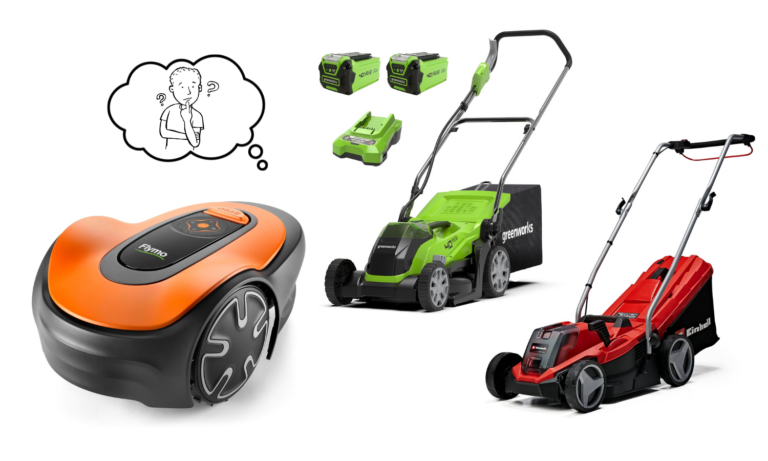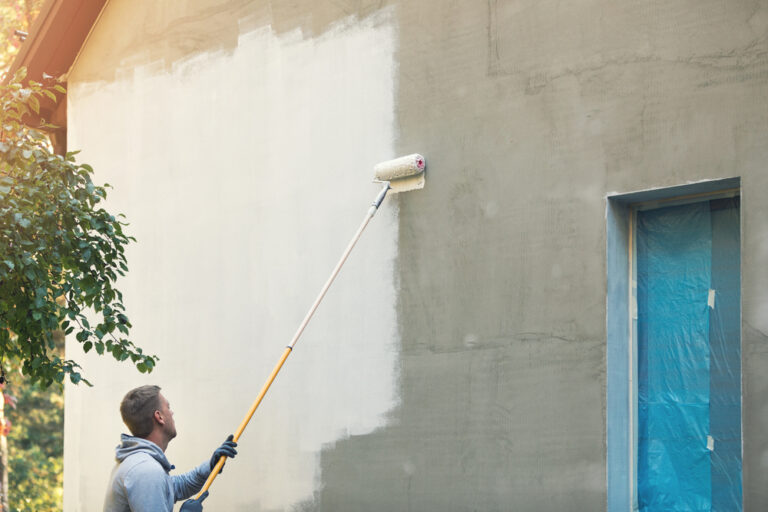21 must-have tools for DIY that won’t break the bank
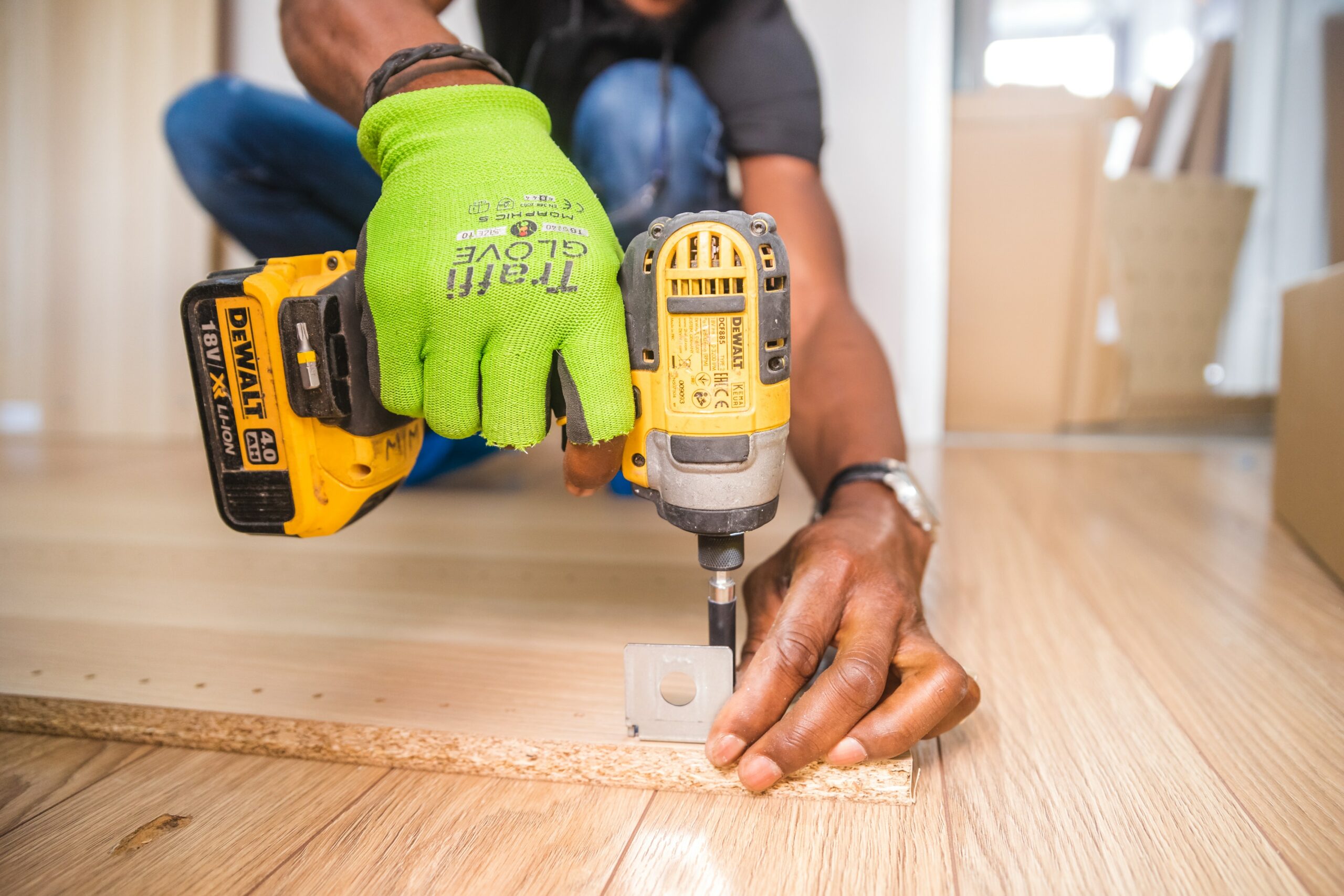
If you’re new to DIY or you’ve recently purchased your first home you’re going to be looking at saving some money and tackling a few DIY projects yourself. The good news is we’ll be covering 21 relatively inexpensive essential tools and accessories that come in very handy when tackling those DIY jobs yourself.
We’ve all been there before, making those pointless trips back and forth to the hardware store for one item and kicking ourselves for not being more organised beforehand with the right DIY tools.
You don’t have to purchase all these items in one go, you can build them up over time depending on your budget each month.
21 must-have tools for DIY projects
There are affiliate links to the Wickes website throughout to help you along the way with your tool purchases. There are some fantastic offers to be claimed with regular price reductions and discounts. Let’s get straight into the list as that’s what we are all here for…
1 – A Toolbox
A good toolbox should be part of your first essential tools purchase. Why? Well, where are you going to store your DIY tools? A quality toolbox or organiser is your best friend for keeping things tidy and it makes it much easier to store and retrieve the next time you need it.
It’s beneficial for health and safety aspects too as you’re eliminating chances of tripping over anything when things are left lying around the house. Plus, keeping sharp objects away from small children speaks for itself.
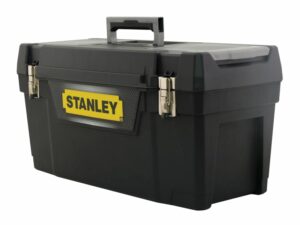
2 – Tape measure
A broader width, 5m tape measure is a great starting point when building up the accessories. Probably the most used item in any DIYer or professional toolbag. This will last you years to come if looked after properly.
Just make sure you get a tape measure with an impact-resistant case for extra protection.
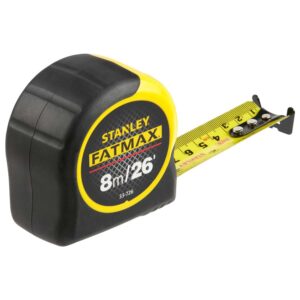
3 – Hammers
A good claw hammer should be part of every DIY tools kit and probably the most versatile tool you can buy. It’s also pretty cool, right? Alongside your claw hammer, we recommend a good quality lump hammer for those heavy-duty jobs where mortar removal or breaking up brickwork is the motive.
Trying to break up brick and mortar with a claw hammer is the last thing you want to do. Trust us, you’ll get fed up with the vibration within a few attempts and you’ll damage the contact surface of the hammer. Always wear safety glasses.

4 – Screwdrivers
Either a good set of soft grip screwdrivers or a multibit screwdriver ratchet is your best option for the basic essential DIY tools. Screwdriver sets generally come in 6 – 48 pieces but you’ll more than likely be fine with 6.
Rachet screwdriver sets are a good choice if you want something that’s compact. The only downside is they are pretty useless if you’re trying to access a screw head down a long, narrow opening.
Choose what’s best for you or if your budget is higher, get both types. But when it comes to the material you want to be choosing a forged chrome vanadium steel product which is better quality and has toughened heads.
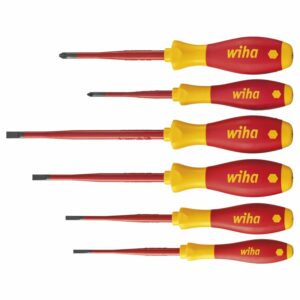
5 – Screws, plugs and nails
A good set of assorted screws, wall plugs and nails are very handy to have in the home for DIY when putting up shelves and hooks.
You can buy individual packs of wood screws, plasterboard screws or even masonry screws for brick and mortar. Or should you be tackling larger jobs every so often you may be better off purchasing a screw assortment set with various size zinc plated coatings.
They go hand in hand with your screwdriver set and they are cheap to purchase.
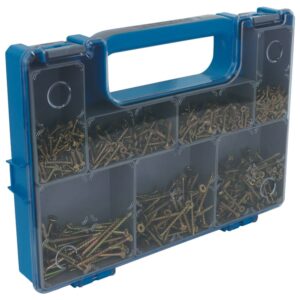
6 – Masking tape and decorating tape
Pretty self-explanatory but often forgotten about in the DIY tools bag. Very handy to have at all times and the decorating tape is ideal if you’re trying to achieve a straight, jagged-free edge when painting.
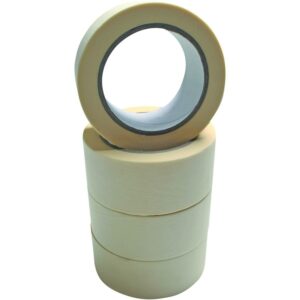
7 – Combi drill
The holy grail of the toolbox. A robust and versatile cordless drill will save you time and energy when doing DIY jobs such as putting a blind or shelf up or even taking a door off the hinges. With variable speed settings, you’re able to complete light and heavy-duty work effortlessly.
If you’re also planning to drill into metal, brick or concrete, you need a combi drill. With multiple torque settings and a hammer drill function, you’re covered for every job. If you want something with extra power you should look for high-capacity batteries that are 4.0 – 5.0Ah.
A good set of drill bits are a wise purchase too as you’ll need a different drill bit for various heads on screws. With a magnetic release, they are super quick to change.

8 – Stanley Knife
Never undervalue a good-quality Stanley knife (or utility knife as some refer to them as). Cutting, trimming and all-around sharpening of even a pencil are some of the key benefits of this little pocket rocket. Just make sure you have replacement blades as a blunt knife will just snag on materials and drive you mad.
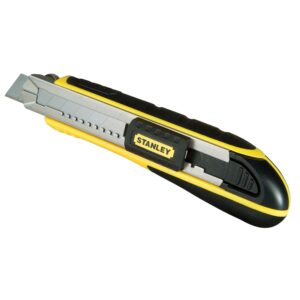
9 – PPE (Personal Protection Equipment)
Never to be overlooked and neglected. You should have a pack of latex gloves, goggles and dust masks as a minimum. Not using gloves when handling cement and adhesives will soon dry out your hands and crack the skin. It’s very hard to repair the skin when long-term damage has set in.
Sawdust and particles in the eyes and lungs can cause serious injury so it’s vital to use them although they look silly, sitting in A&E is worse.
If you’re handling building materials then it’s best to invest in a pair of steel toe cap boots too.
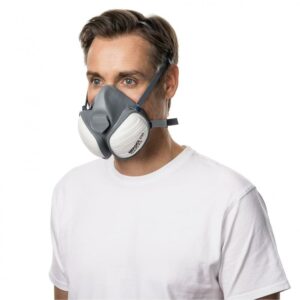
10 – Paint brushes, rollers, trays & white spirit
A quick touch-up or a complete refresh of interior walls is usually part of the DIY projects many of us face at some point. Not the most pleasant job as it often gets messy but doing this yourself can save you a lot of money.
A set of quality brushes, a good 9 or 12-inch roller, a paint tray and a small bucket are cheap and very handy for these jobs. If you look after them and clean them after each application they will serve you well for a long time. May of us neglect them and throw them away when in fact using white spirit and warm water is the way to go.
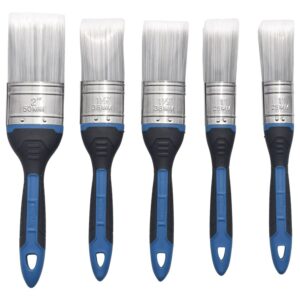
11 – Step Ladders
For those chair standers, save yourself the injury of falling and invest in a good set of foldaway ladders. They are lightweight by today’s standards and much safer when drilling or painting high up. Go for a fibreglass material with 6 treads (6 steps) as they’re a good compromise between reach and space when stored.
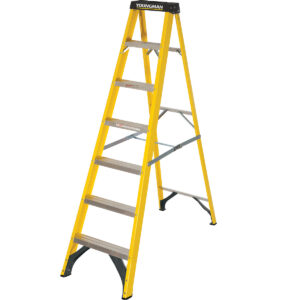
12 – Saws
Choosing a quality panel or (wood saw) saw is probably the most popular route as they’re versatile for various cuts required on many DIY jobs. There are different blades for different types of cutting such as ripping and cross-cut to fine cutting. Generally, a ripping and cross-cutting blade will suffice for general-purpose jobs.
Just make sure you choose a soft grip handle and a 22″ blade as they’re more forgiving.
You may wish to look at a hack saw too, but make sure you get extra blades as they bend and snap very easily when cutting piping and metal.

13 – Chisels – Cold & Bolster
For lifting floorboards and breaking up bricks and mortar, you need these in the DIY tools kit. You won’t get very far without them if this is the bulk of your DIY projects. When used with a lump hammer on brick and mortar, you’ll get through the thick of it quicker and retain some energy in the process as you’re letting the weight do the work. Get a set with guards on top to save catching your hand on the downswing!
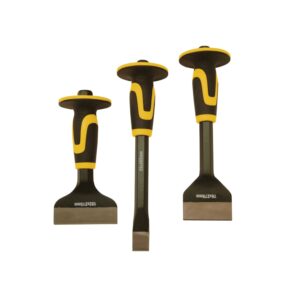
14 – Headtorch
Often overlooked is a good headtorch. Yes, they may look silly but you’ll be grateful to have your hands free when and be able to see in those dark spaces such as the loft or under the stairs. 150 lumens or higher is bright enough for most DIY jobs.
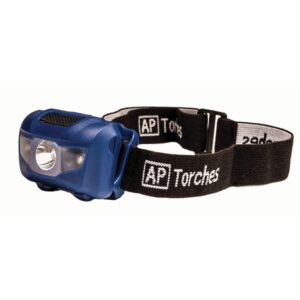
15 – Pliers, side cutters and an adjustable spanner
Long-nose pliers and side-cut pliers with rubber handles are great additions as they are very versatile when it may come to crimping or cutting wires and cable ties around the house. Just make sure they aren’t bare metal as you’ll appreciate the extra insulation in case of a shock!
An adjustable spanner is part of the essential tools for DIY. The most iconic tool in the toolbox and one you should definitely own. Leaky tap? Grab the adjustable spanner but make sure you use a cloth on polished finishes to avoid scratches.
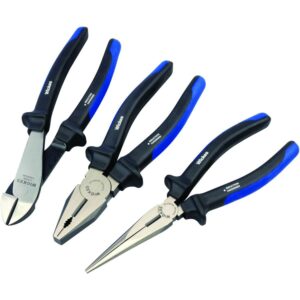
16 – Mains screwdriver
A mains testing screwdriver can be a life-saving essential when working with electrics. A quick touch on a live wire will indicate a red light. You can pick these up for a few pounds, just make sure you test it on something that is live to make sure it’s not faulty. If you’re a complete novice then we suggest leaving it to the professionals.
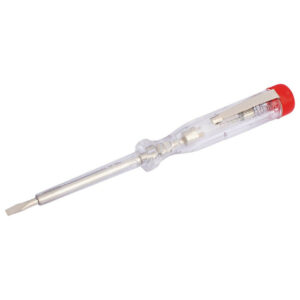
17 – A Cable detector or Wall Scanner
Used to detect cables, metal objects such as piping and similar elements you do not want to drill into behind walls. A simple cable detector (or stud finder) is relatively cheap and does the job in terms of electrics, but if you want something more advanced then there are digital wall scanners which can literally detect anything from gas pipes, joists and metal.
By printing a digital strength indicator on the screen to find the centre line it gives you ultimate precision and accuracy. However, these are suited more towards professionals on-site.
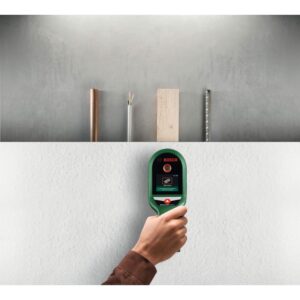
18 – A spirit level
Preferably a metre long spirit level or larger as they also come in handy marking straight lines and making sure fence posts or picture frames are level.
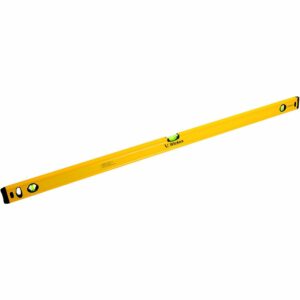
19 – Scraper & Putty knife
Scapers are very handy for removing wallpaper and dried-on paint around PVC windows (when you’ve been a bit careless). We recommend keeping it clean and making sure it’s straight-cut without any jagged edges. You can sharpen them with oil and a sharpening tool if you wish to make them a bit sharper than normal but be careful when doing so.
A good putty knife is great for DIY projects requiring wall patching and filling in small cracks and holes. They are slimmer, thinner and more flexible for skimming filler when you’re looking for a thin layer to avoid rigorous sanding. They are generally made of carbon steel.
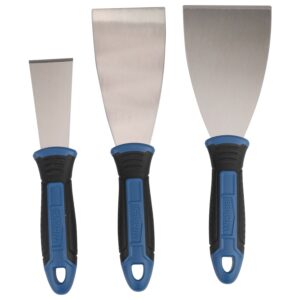
20 – Ratchet Clamps
Known as quick-grips, these are very handy to have when you are cutting, aligning and waiting for adhesives to dry. As DIY tools go, these are a lifesaver when you’re working solo on home improvement jobs.
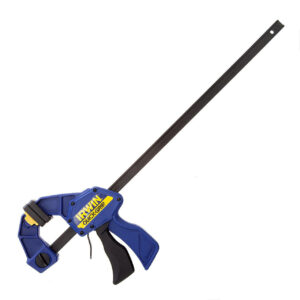
21 – A workbench
Not essential but certainly easier to cut timber if you’re a bit more advanced. They also help your back rather than crouching down on the floor which is pretty difficult if you’ve ever tried something similar before! Combined with the ratchet clamps you have a solid foundation with zero slip so it’s worth considering.
They are also handy for putting drill bits and smaller objects like screws on so you don’t lose them and end up crawling around on the floor trying to find them!
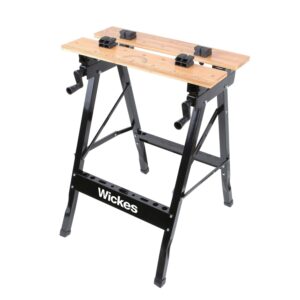
Conclusion
This list covers a good selection of useful tools and essential tools to make those DIY projects a little bit easy and save you money in the long run. When you have the right gear you have a better idea of the time and energy required to get the job done without travelling back and forth each time you need a part.
Although the power tools you need will differ from person to person, a good cordless drill is something you should definitely look to invest in (albeit one of the more expensive items on the list) it will literally save you hours of manually screwing and unscrewing fixings and is undoubtedly one of the essential tools around the house.
Happy DIY’ing!

